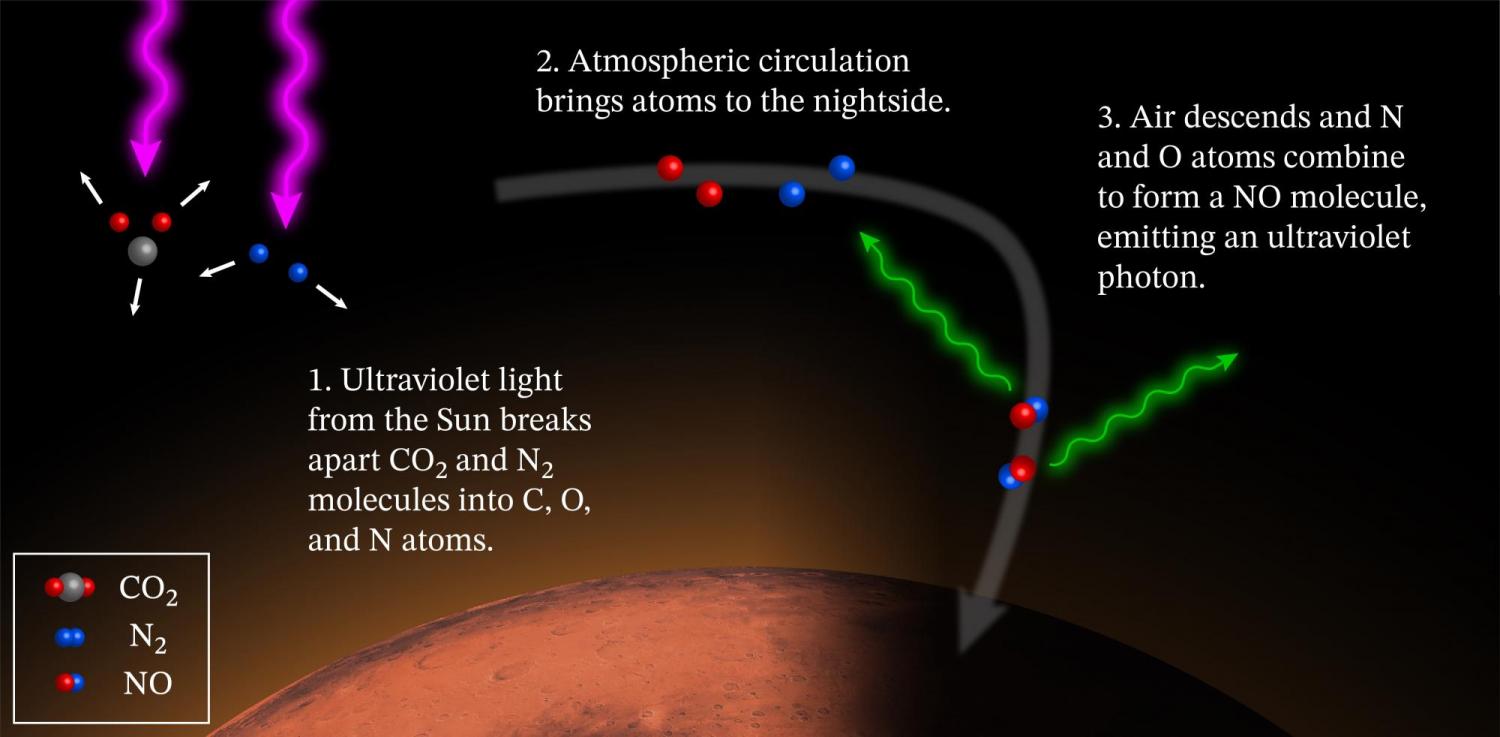When the sky glows green on Mars
After the Sun sets on the Red Planet and temperatures fall below -62 degrees Celsius, part of its atmosphere begins to glow. It starts at an altitude of about 70 kilometers shortly after sunset. The spots, which are up to 1000 kilometers large and shine as brightly as the Northern Lights on Earth, then move at about 300 kilometers per hour across the night sky. Future astronauts, however, won’t be able to marvel at them, unfortunately, because the spectacle plays out only in the ultraviolet range, which is invisible to the human eye.
Researchers chose a green color for a false-color representation of the UV light intensity in images of the effect captured by the ESA probe, Mars Express. Thanks to data from NASA’s Maven probe, more is now known about the process and the source of the light.
The researchers on the Maven team noticed that Mars’s atmosphere pulsed exactly three times a night, and only in the spring and fall. They also found unexpected waves and spirals over the poles during wintertime, and where the UV light is the brightest.
From this, the researchers determined what generated the lights: during the day, UV light from the Sun splits carbon dioxide and nitrogen molecules into their constituent atoms. At night, while the Sun is no longer shining, N and O recombine to form NO, releasing UV light in the reaction. The light is brightest where vertical winds transport the gas directly downward into denser layers, which increases the rate of reaction.

